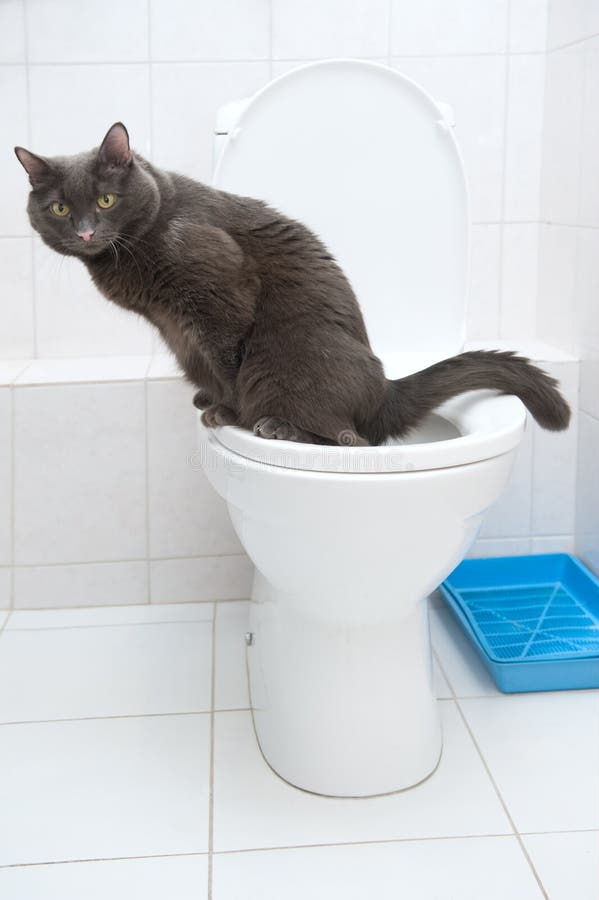Just about everyone will have their own individual idea in relation to Don’t flush cat feces down the toilet.

Intro
As pet cat owners, it's vital to be mindful of exactly how we throw away our feline friends' waste. While it may seem practical to purge pet cat poop down the toilet, this technique can have harmful repercussions for both the setting and human health.
Alternatives to Flushing
Fortunately, there are much safer and extra accountable ways to deal with pet cat poop. Think about the adhering to choices:
1. Scoop and Dispose in Trash
The most usual method of disposing of pet cat poop is to scoop it right into a naturally degradable bag and toss it in the trash. Make certain to make use of a specialized litter scoop and get rid of the waste promptly.
2. Use Biodegradable Litter
Go with biodegradable cat litter made from materials such as corn or wheat. These trashes are environmentally friendly and can be safely disposed of in the trash.
3. Bury in the Yard
If you have a yard, consider hiding feline waste in a designated area far from veggie gardens and water resources. Make certain to dig deep adequate to prevent contamination of groundwater.
4. Mount a Pet Waste Disposal System
Invest in a family pet garbage disposal system specifically created for feline waste. These systems use enzymes to break down the waste, decreasing smell and ecological impact.
Health Risks
Along with environmental issues, purging cat waste can likewise present wellness risks to human beings. Pet cat feces may have Toxoplasma gondii, a parasite that can cause toxoplasmosis-- a possibly severe disease, specifically for expectant females and individuals with damaged body immune systems.
Environmental Impact
Purging pet cat poop introduces hazardous microorganisms and parasites right into the supply of water, presenting a significant risk to water ecological communities. These impurities can adversely affect aquatic life and compromise water top quality.
Final thought
Liable pet possession prolongs past offering food and sanctuary-- it also entails proper waste monitoring. By avoiding purging cat poop down the toilet and going with different disposal techniques, we can minimize our ecological footprint and shield human wellness.
Why Can’t I Flush Cat Poop?
It Spreads a Parasite
Cats are frequently infected with a parasite called toxoplasma gondii. The parasite causes an infection called toxoplasmosis. It is usually harmless to cats. The parasite only uses cat poop as a host for its eggs. Otherwise, the cat’s immune system usually keeps the infection at low enough levels to maintain its own health. But it does not stop the develop of eggs. These eggs are tiny and surprisingly tough. They may survive for a year before they begin to grow. But that’s the problem.
Our wastewater system is not designed to deal with toxoplasmosis eggs. Instead, most eggs will flush from your toilet into sewers and wastewater management plants. After the sewage is treated for many other harmful things in it, it is typically released into local rivers, lakes, or oceans. Here, the toxoplasmosis eggs can find new hosts, including starfish, crabs, otters, and many other wildlife. For many, this is a significant risk to their health. Toxoplasmosis can also end up infecting water sources that are important for agriculture, which means our deer, pigs, and sheep can get infected too.
Is There Risk to Humans?
There can be a risk to human life from flushing cat poop down the toilet. If you do so, the parasites from your cat’s poop can end up in shellfish, game animals, or livestock. If this meat is then served raw or undercooked, the people who eat it can get sick.
In fact, according to the CDC, 40 million people in the United States are infected with toxoplasma gondii. They get it from exposure to infected seafood, or from some kind of cat poop contamination, like drinking from a stream that is contaminated or touching anything that has come into contact with cat poop. That includes just cleaning a cat litter box.
Most people who get infected with these parasites will not develop any symptoms. However, for pregnant women or for those with compromised immune systems, the parasite can cause severe health problems.
How to Handle Cat Poop
The best way to handle cat poop is actually to clean the box more often. The eggs that the parasite sheds will not become active until one to five days after the cat poops. That means that if you clean daily, you’re much less likely to come into direct contact with infectious eggs.
That said, always dispose of cat poop in the garbage and not down the toilet. Wash your hands before and after you clean the litter box, and bring the bag of poop right outside to your garbage bins.
https://trenchlesssolutionsusa.com/why-cant-i-flush-cat-poop/

We were made aware of that editorial on Can You Flush Cat Poo or Litter Down the Toilet? from a good friend on our other web property. Make sure you set aside a second to promote this content if you enjoyed it. I love reading our article about Can You Flush Cat Poo or Litter Down the Toilet?.
Get Quote
Comments on “Prevent Clogs and Damage: Don't Flush Cat Poop Down Your Toilet - Professional Insights”